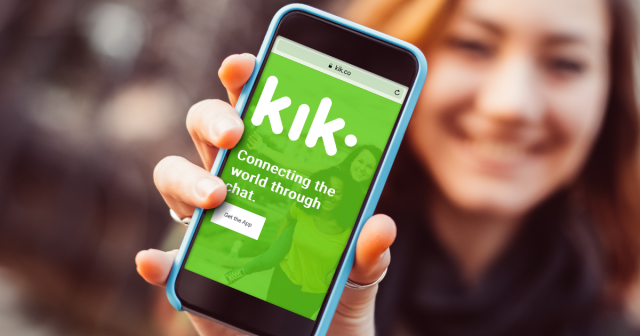
KIN Has Already 300 Million Users On Standby On Their Messaging App ‘KIK’

It was late December 2017, when one of my colleagues first found out about KIN. He introduced us to the basic concept of the token and he ‘got us’ stating that he purchased almost a million (1.000.000) KIN tokens for less than $500 USD. That fact alone managed to hook most of my affiliates including myself into the ‘game’.
We were aware of the huge supply reaching 10,000,000,000,000 KIN tokens, but we were also fine with the fact, since obviously KIN would never reach Bitcoin prices. It was almost certain tho that it could reach $0,01, $0,1 and maybe even $1 in the macro future.
That was more than just enough to convince us that KIN could turn us into millionaires with a couple thousand bucks, something happened multiple times in the crypto history until now.
So what exactly is KIN and why do we think it could be that ‘one of these multiple times‘ ?
Related to the word “kinship” and conveying a feeling of being connected to community, the Kin cryptocurrency is designed specifically to bring people together in a new shared economy and will serve as the foundation for a decentralized ecosystem of digital services.
Envisioned as a general purpose cryptocurrency for use in everyday digital services, Kin will be used for all transactions within the KIN Ecosystem. Implemented on the public Ethereum blockchain as an ERC-20 token – altough rumors want it shifting to Stellar (XLM) due to lower fees, faster transaction times and scalability aspects – KIN will serve as the basis of interoperability with other digital services in the KIN Ecosystem.
Kik Messenger will be the first digital service to join the KIN Ecosystem, commonly called Kik, it is a freeware instant messaging mobile app from the Canadian company Kik Interactive, available free of charge on iOS and Android operating systems. It uses a smartphone’s data plan or Wi-Fi to transmit and receive messages, photos, videos, sketches, mobile webpages, and other content after users register a username. Kik is known for its features preserving users’ anonymity, such as allowing users to register without providing a telephone number. The application logs user IP addresses which the company can use to determine location. As of May 2016, Kik Messenger had approximately 300 million registered users, and was used by approximately 40% of United States teenagers.
The Kik Messenger is just the kickstart of the new blockchain based platform and it supports the legitity of the project. 300 million registered users, they know it or not will be soon using KIN in between the KIK app and other digital services to arrive by the KIN Foundation. The KIK Messenger will also be tested in being used as a KIN wallet as the company described recently. As for the digital services, they don’t really have to direct creations of the KIN Foundation in order to take part in the KIN Ecosystem.
Through the KIN rewards engine, KIN will be introduced into circulation as a daily reward, to be distributed among stakeholders by an algorythm that reflects each community’s contribution to the overall ecosystem. This economic structure will create a natural inventive for owners of other digital services to adopt KIN and become partners in the KIN Ecosystem. For example, Facebook messenger could use KIN, Twitter could use KIN, Whatsapp, Viber etc. could all use KIN respectively.
You’re going to think, why would they right? Well…rewind. “As of May 2016, Kik Messenger had approximately 300 million registered users, and was used by approximately 40% of United States teenagers.”
If the youth starts to talk about KIN and spread the benefits it offers via the KIN Ecosystem, the ‘kids’ will demand it on their respective messangers or they could literaly take down any platform by simply chosing something else. (Remember what happened with MySpace? – Oh you don’t even know what that is? Right…)
Concluding : The Kin Ecosystem is a community of partners, digital services and applications that adopt Kin as their currency. The foundation acts as an independent, nonprofit and democratic governance body for the members of this ecosystem.
The principal functions of the foundation include: – Open governance of its resources, together with other ecosystem partners. – The support and advancement of technology related to Kin’s implementation – All matters related to ecosystem membership, including the Kin Rewards Engine.
In the long term, the foundation will fund research and development efforts to support an autonomous reward mechanism that is secure against economic vulnerabilities and gaming, with all transactions accounted in a fully decentralized way.
Now here comes the tricky part. KIN is currently available on very unattracting to say at least “exchanges”. We used Mercatox to purchase our first chunk, but this site was down for a couple days around New Year’s EVE, causing a panic among members, inluding us. I got out of the platform back to the safety of Binance as soon as the site was back on, losing my position in KIN for the moment, while some of my colleagues decided to stay and see what happens.
It is true that until KIN hits Binance / Bitfinex / KuCoin etc. it may be already costing $0,01 per unit and purchasing a million coins would require around $10.000 USD at that time. Therefore it would make me feel safer.
Would you ‘jump’ into KIN before Binance listing and why? Let me know in the comments.
Reporting for The Independent Republic, Ross Peili